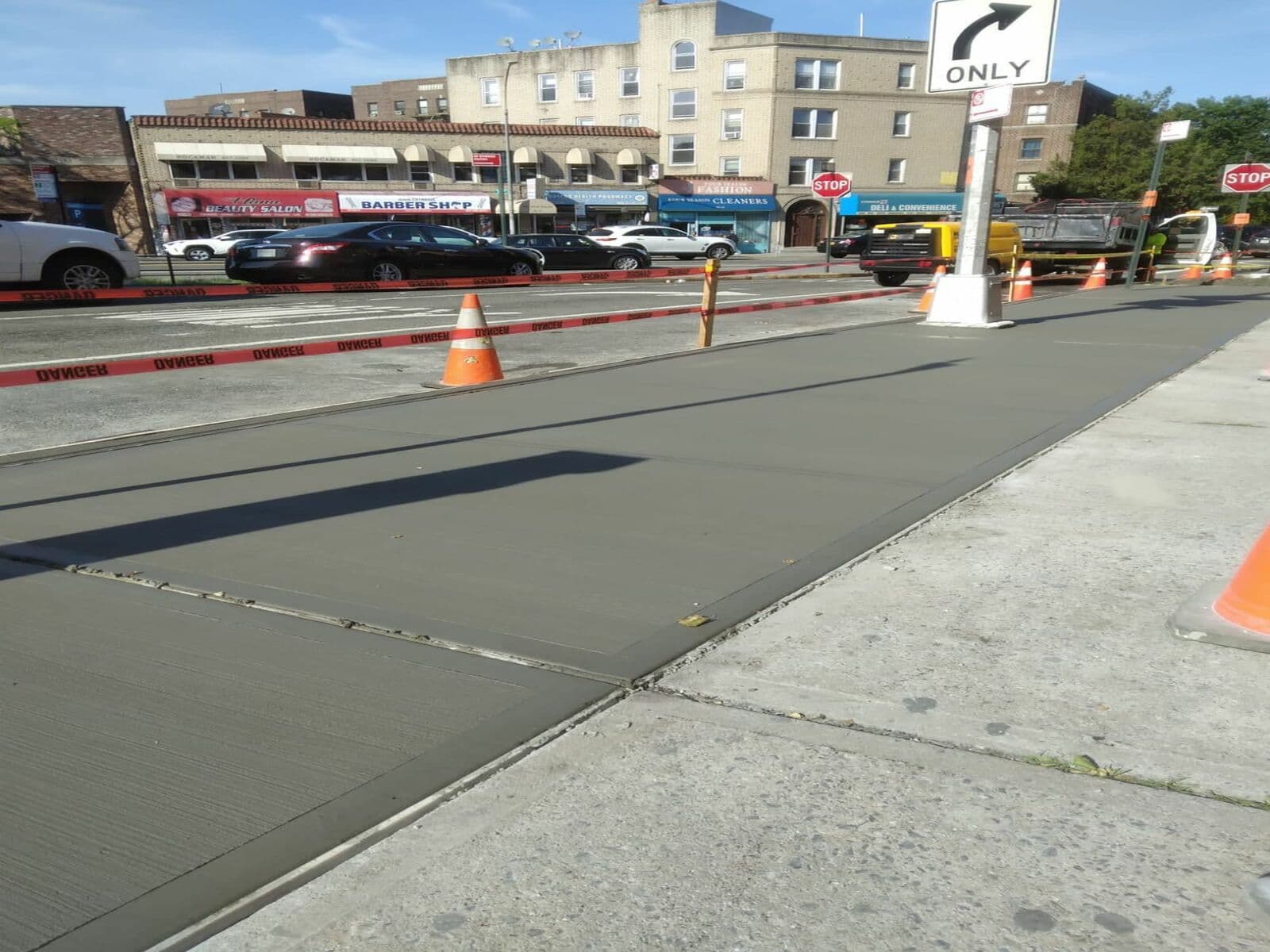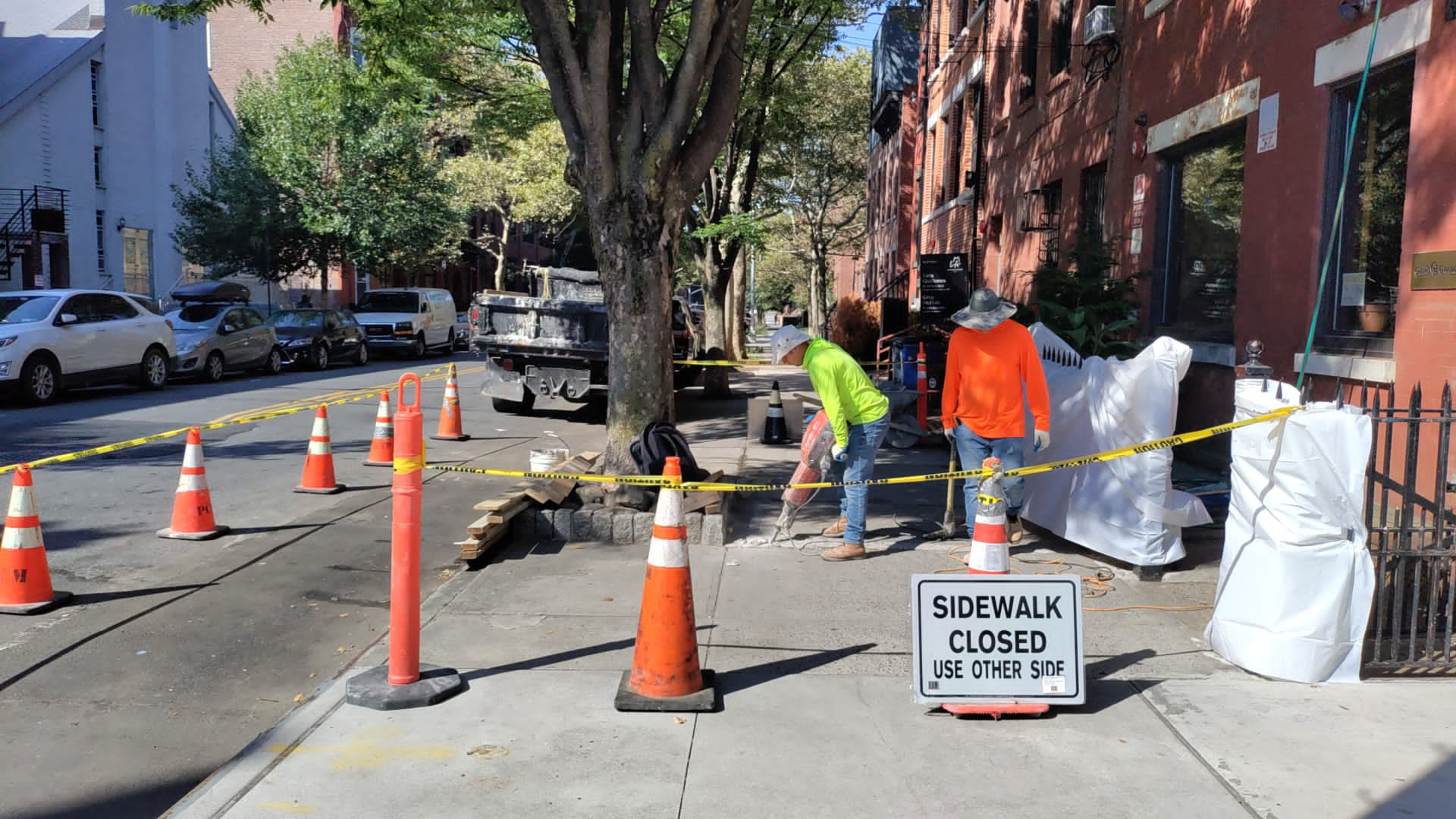
Sidewalk Repair in Nyc: A Comprehensive Guide

Welcome to our comprehensive guide on sidewalk repair in New York City (NYC). As a leading authority in high-quality content, we are here to provide you with all the information you need to know about sidewalk repair in the bustling metropolis of NYC. Whether you're a homeowner, business owner, or simply curious about the subject, this guide will help you navigate the intricacies of sidewalk repair and ensure that you are well-informed.
Understanding Sidewalk Repair Regulations in NYC
Before diving into the details, it's crucial to understand the regulatory framework surrounding sidewalk repair in NYC. The responsibility for sidewalk maintenance and repair falls upon property owners, according to the New York City Department of Transportation (NYCDOT). Property owners are legally required to maintain the sidewalks adjacent to their properties in a safe and compliant condition.
Identifying Common Sidewalk Issues
Now, let's delve into the various sidewalk issues commonly encountered in NYC. By understanding these problems, you can better assess the condition of your sidewalk and determine whether repair or replacement is necessary.
1. Cracks and Uneven Surfaces
Cracks and uneven surfaces are prevalent issues that can occur due to tree roots, temperature fluctuations, or general wear and tear. These imperfections not only pose a safety hazard but also diminish the overall aesthetic appeal of the sidewalk.
2. Potholes and Depressions
Potholes and depressions are typically caused by heavy traffic or extreme weather conditions. These surface irregularities can lead to tripping hazards, especially for pedestrians with mobility challenges.
3. Trip Hazards
Sidewalks with height differentials, often referred to as trip hazards, can occur when two concrete slabs are unevenly aligned. These hazards can pose a significant risk, potentially resulting in trips, falls, and injuries.
4. Crumbling Edges
Crumbling edges are characterized by the deterioration of the sidewalk's boundaries. This can lead to structural instability and further exacerbate other sidewalk issues if left unaddressed.
Sidewalk Repair Options
When it comes to repairing or replacing a damaged sidewalk, property owners in NYC have a few options available to them. It's essential to consider the extent of the damage, budgetary constraints, and timeframes when selecting the appropriate course of action.
1. Patching and Filling
For minor cracks and surface-level issues, patching and filling techniques can be employed. This involves applying a specialized concrete mixture to fill the cracks and restore the sidewalk's integrity. However, it's worth noting that this method may not be a long-term solution for more significant structural problems.
2. Grinding and Leveling
Grinding and leveling techniques are effective for correcting uneven surfaces and trip hazards. This process involves smoothing out the uneven portions of the sidewalk to create a level walking surface. It is a cost-effective alternative to complete replacement, provided the underlying concrete is in relatively good condition.
3. Complete Replacement
In cases where the sidewalk damage is extensive or irreparable, complete replacement is often the most suitable option. This involves removing the existing concrete and pouring a new sidewalk that meets all safety and regulatory standards. While it may be a more significant investment, complete replacement ensures a durable and long-lasting solution.
NYC Sidewalk Repair Process
Now that we have explored the different repair options, let's walk through the general process involved in sidewalk repair in NYC.
Assessment and Inspection: Begin by assessing the condition of your sidewalk or hiring a professional contractor to conduct a thorough inspection. This evaluation will help determine the scope of the repair or replacement required.
Obtain Necessary Permits: Before commencing any repair work, ensure
Obtain Necessary Permits: Before commencing any repair work, ensure that you obtain the necessary permits and approvals from the appropriate authorities. you will need to obtain a Sidewalk Repair permit from the NYCDOT.
Hire a Professional Contractor: It is highly recommended to hire a professional contractor with experience in sidewalk repair in NYC. Look for contractors who are licensed, insured, and have a good reputation in the industry. They will have the expertise to handle the repair or replacement efficiently and in compliance with local regulations.
Prepare the Work Area: Before beginning the repair, clear the area around the sidewalk to ensure easy access and minimize any potential disruptions. This may involve removing obstacles, such as plants, furniture, or other objects that may obstruct the repair process.
Demolition and Removal: If complete replacement is required, the existing sidewalk will need to be demolished and removed. This process involves breaking up the concrete using specialized equipment and disposing of the debris responsibly.
Reinforcement and Formwork: Once the old sidewalk is removed, the contractor will assess the underlying soil conditions and make any necessary improvements. They will then install reinforcement, such as steel bars or wire mesh, to provide additional strength and stability to the new concrete.
Concrete Pouring and Finishing: With the preparation complete, fresh concrete will be poured into the designated area. The contractor will ensure that the concrete is properly leveled and smoothed to achieve a uniform surface. They may also apply a textured finish or add decorative elements, if desired.
Curing and Drying: After the concrete is poured and finished, it needs time to cure and dry properly. This process typically takes several days, during which the contractor will take measures to protect the area and prevent any damage or premature wear.
Clean-Up and Restoration: Once the concrete is fully cured, the contractor will clean the area and remove any debris or construction materials. They will also restore the surrounding landscape or pavement, ensuring a seamless integration with the repaired sidewalk.
Regular Maintenance: After the repair or replacement is complete, it is important to maintain the sidewalk regularly. This includes addressing any minor cracks or surface imperfections promptly to prevent them from worsening over time.
By following these steps and working with a reputable contractor, you can ensure a successful sidewalk repair or replacement process in NYC. Remember, prioritizing the safety and compliance of your sidewalk not only benefits you as a property owner but also contributes to the overall well-being of the community.
Conclusion
In conclusion, sidewalk repair in NYC is a crucial responsibility of property owners. By understanding the common issues, repair options, and the overall process involved, you can make informed decisions and take the necessary steps to maintain safe and aesthetically pleasing sidewalks. Remember, when it comes to sidewalk repair, it's always best to consult with professionals who have the expertise and knowledge to ensure a job well done.
For more information and assistance with sidewalk repair in NYC, feel free to contact our team of experts. We are here to help you navigate the intricacies of sidewalk repair and provide you with the guidance you need.
Appreciate the creator